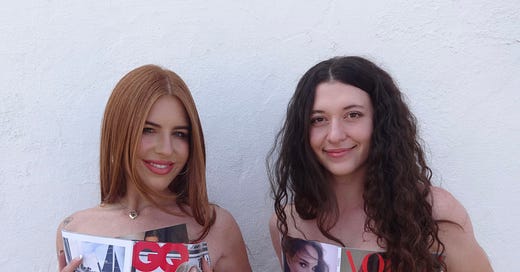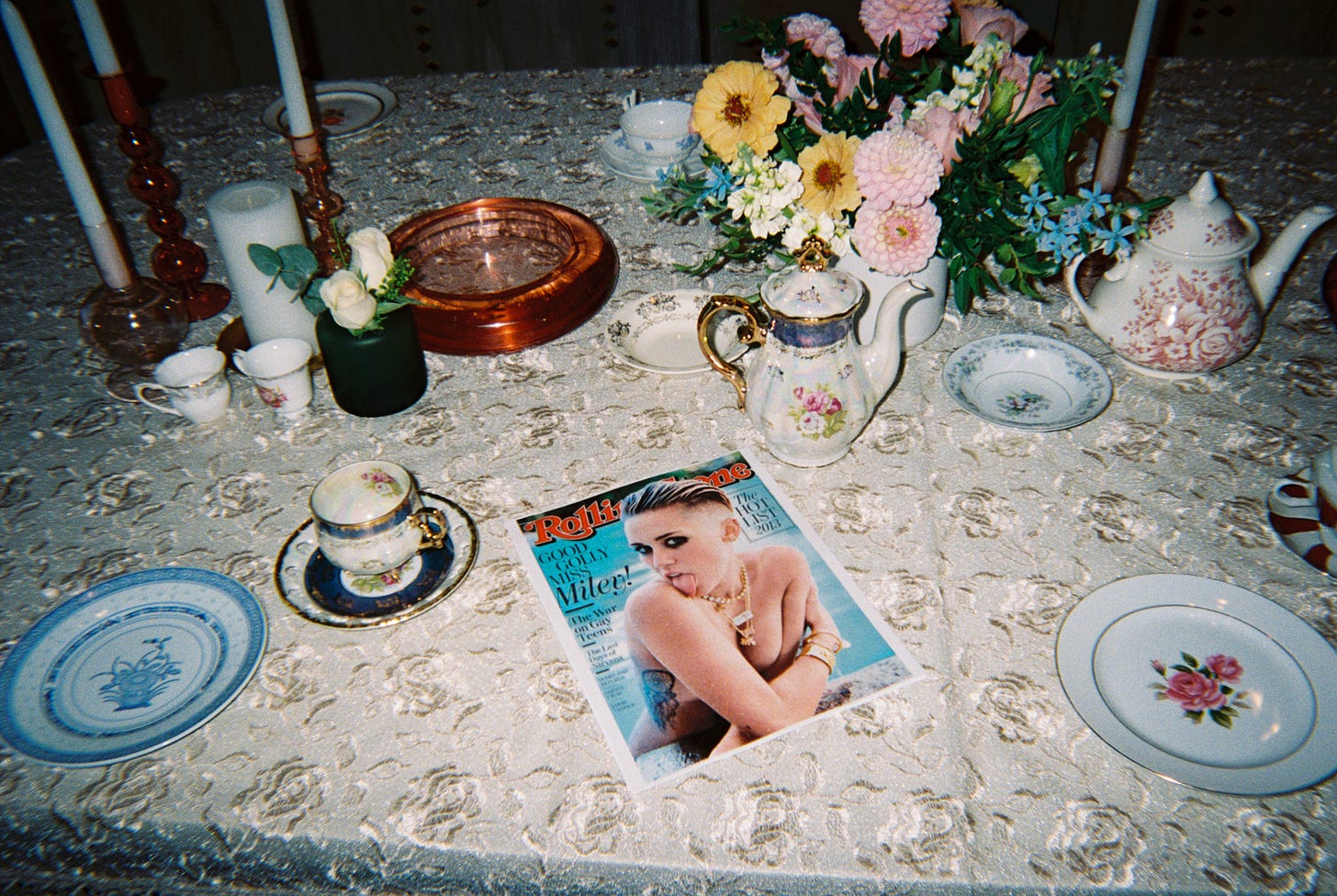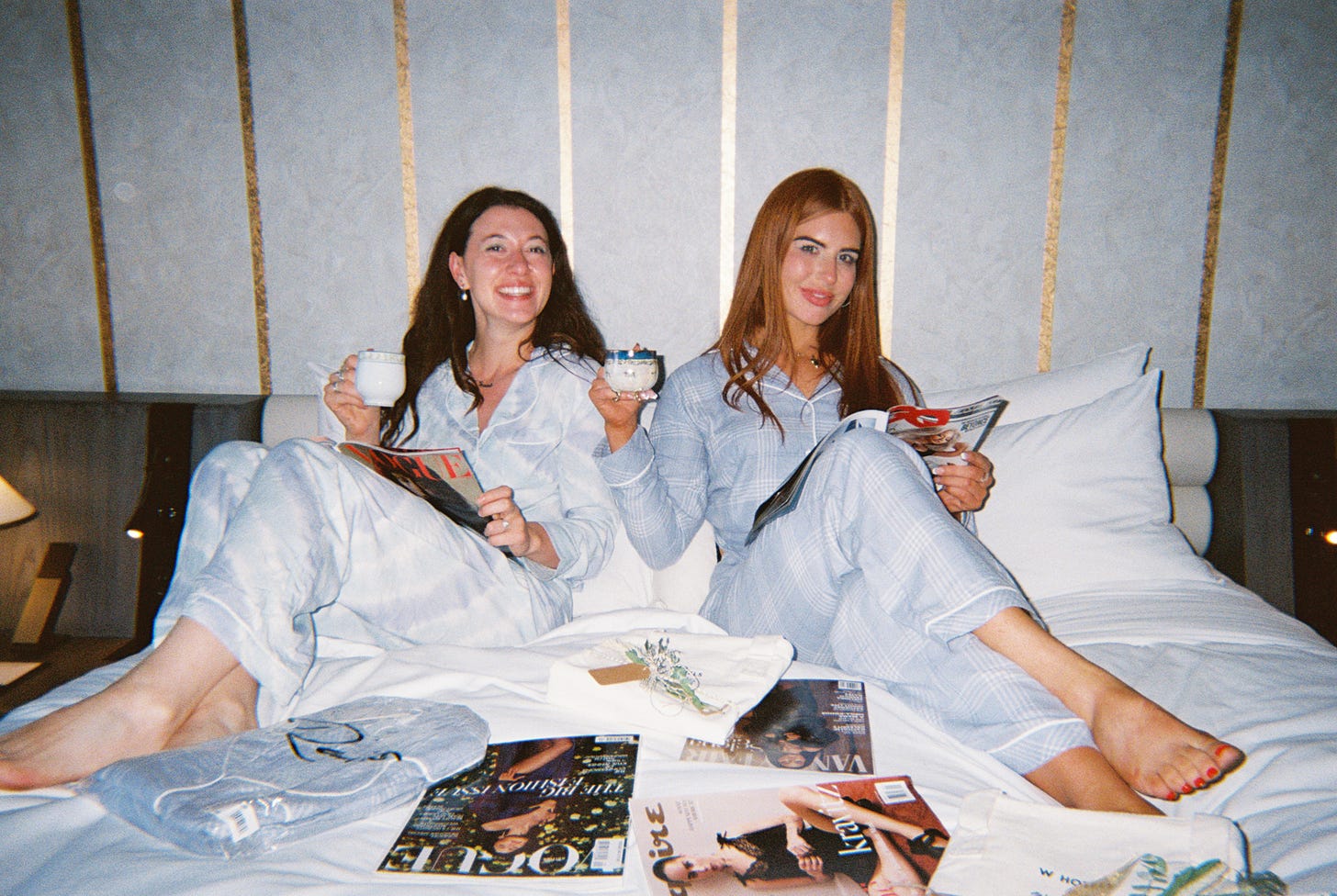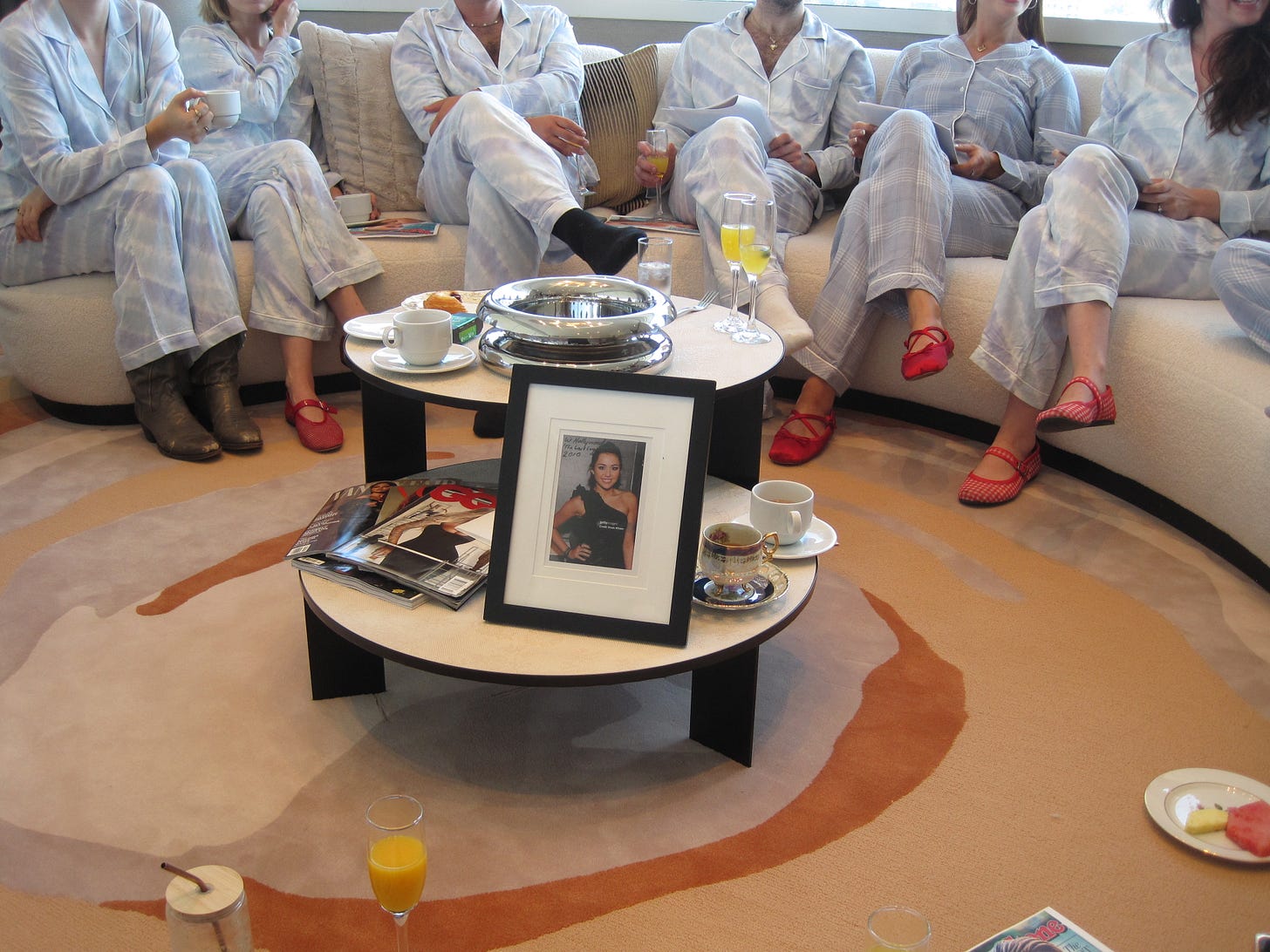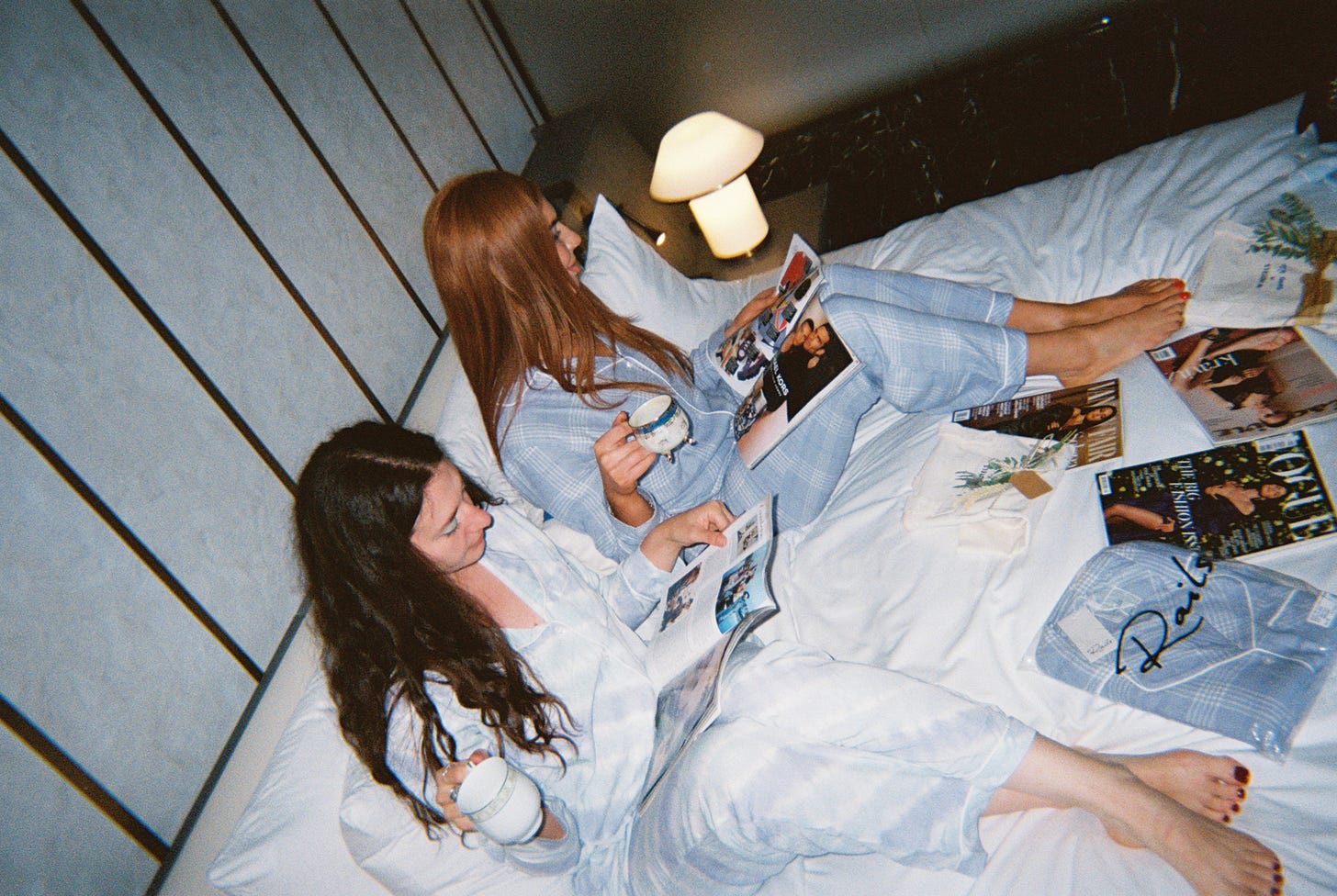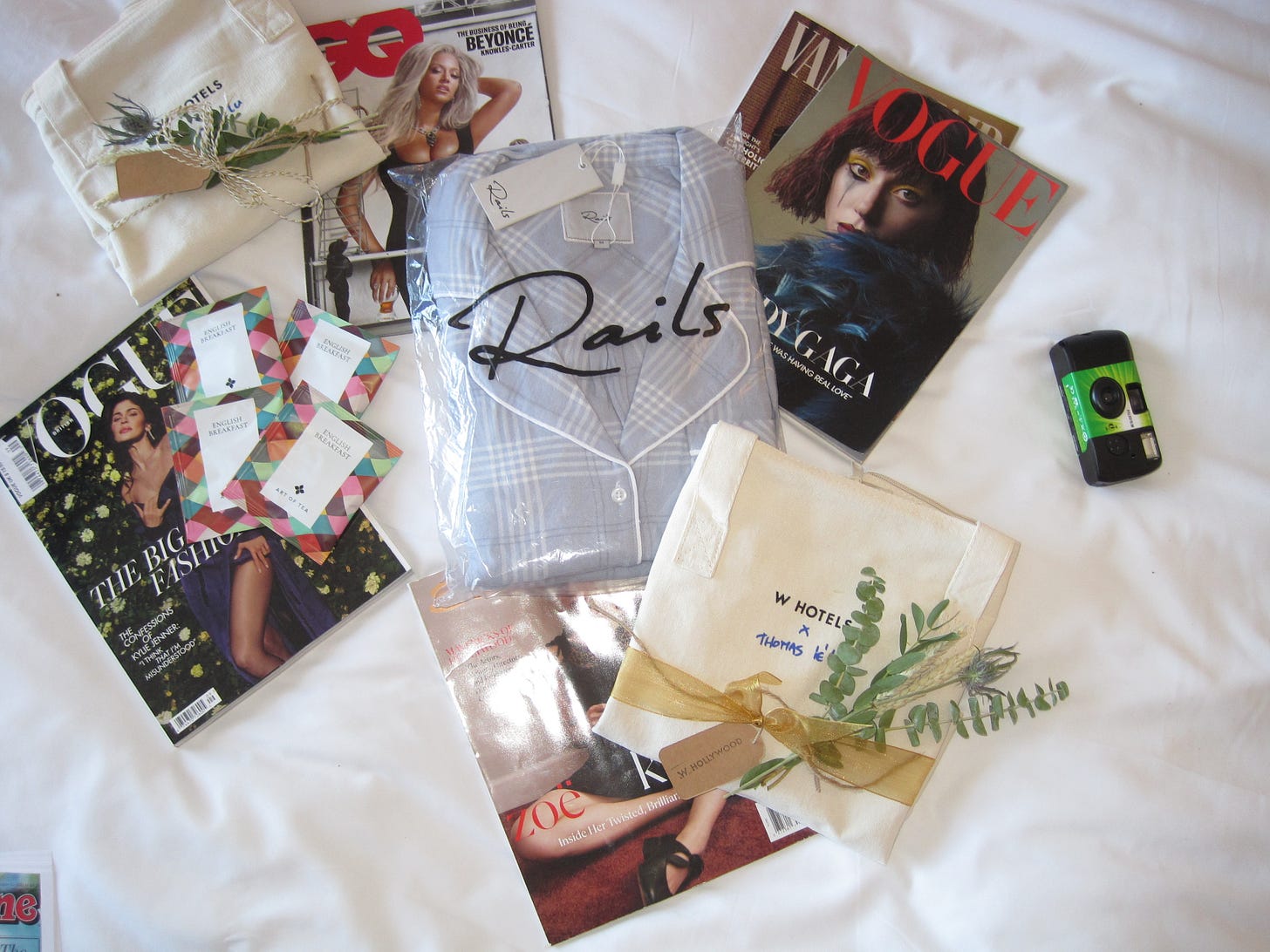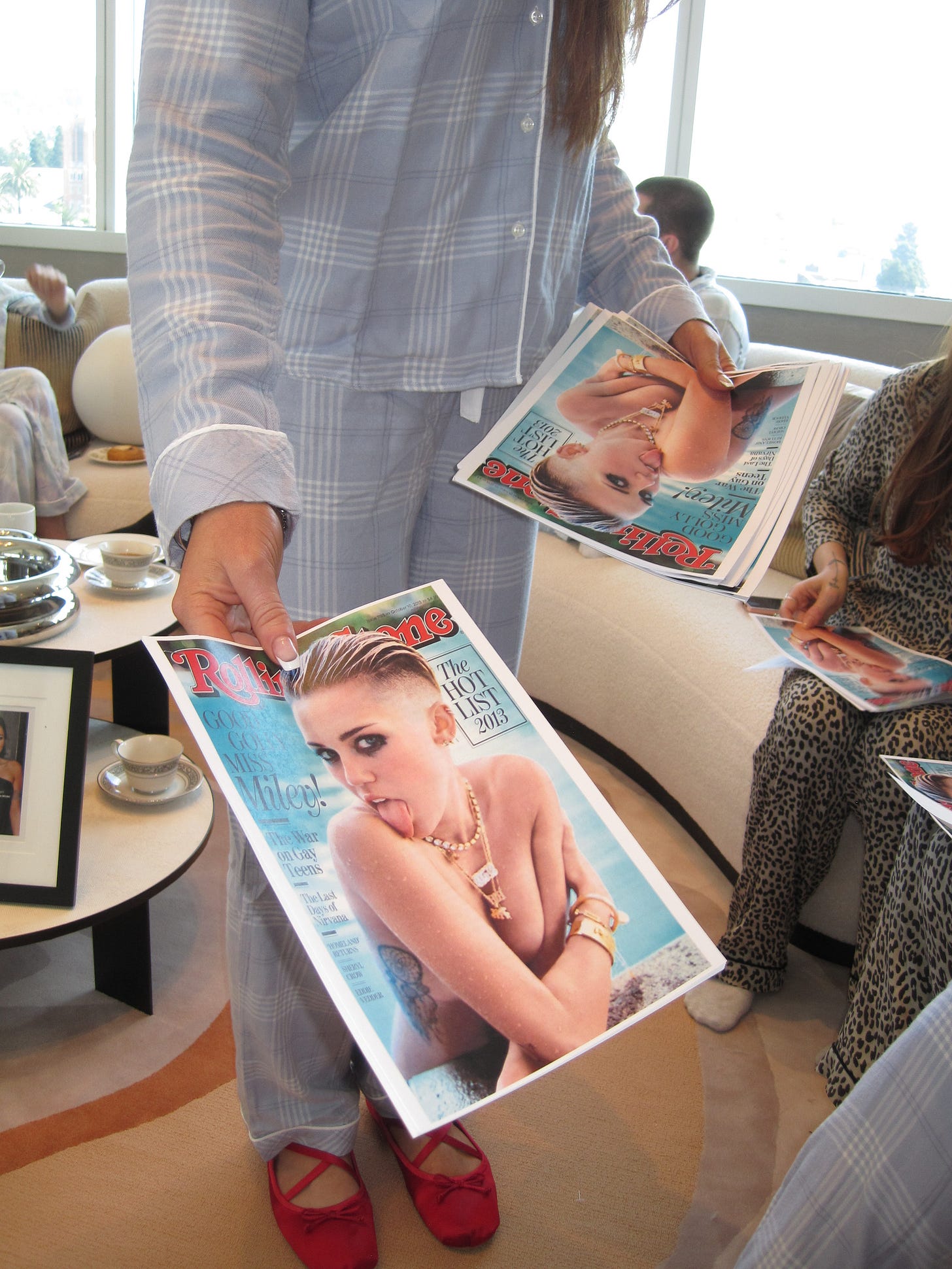real talk: (un)cover girl podcast
we talk with journalists Beatrice Hazlehurst and Ivana Rihter about their (un)cover girl podcast
For real talk, we caught up with journalists Beatrice Hazlehurst and Ivana Rihter about their (un)cover girl podcast, which examines past celebrity profiles that have shifted culture. The duo are well-rounded veterans within media, covering the intersection of fashion, beauty, culture, and celebrity for a litany of prestigious publications.

Recently, Hazlehurst and Rihter hosted a pajama-themed literary salon in collaboration with W Hotel in Hollywood. They have another upcoming salon with the hotel slated for December 15th.
Below, we chat with the pair about starting their podcast, how celebrity profiles inform culture, and their dream cover stars to be featured in print.
What made you two want to start the (un)cover girl podcast?
BH: Honestly, the fact it hadn't already been done. To be a podcast fan is to have uncovered – hehe! – an unending slate of rewatch shows and book clubs. What felt particularly fun and fresh about diving into celebrity profiles is that they situate the reader – or, in our case, listener – in the context of sitting and getting to know a star intimately over a cocktail or four. We've described interviewing celebrities as a blind set-up where your date asks nothing about you, and I think it's so cute for our audience to be able to relate to that very niche experience. Also, this writing is the only format journalists can get really literary, and these stories are art.
IR: Absolutely; it also feels very rooted in our relationship as two dear friends trying to navigate all the wild changes in our industry. Being a journalist right now is best done with a friend. We met while interviewing an up-and-coming singer/songwriter and have been cheering each other on ever since. Starting the podcast felt like a natural extension of our obsessions, the conversations we were already having over DMs when a huge profile drops, but in a more polished format. There is such a treasure trove of old profiles to dig into, and it is the highlight of my week to sit knee-to-knee and go deep into what is happening in the zeitgeist.
How do previous magazine covers inform and fuel current-day pop culture?
BH: Dude. So much more than I ever thought possible. First of all, history rhymes; everything we've seen comes around again. Also, we have come so far. John Mayer certainly could not say D*** D*** c***k in Playboy now, but he sure as hell sent it to the moon in 2010. Going back to a time when talent didn't fear cancel culture is exhilarating and bizarre — it's seeing our moral evolution timestamped.
IR: These magazine stories are imprinted in our collective memory. The covers are ones people might have plastered on the walls of their childhood room or watched their mom buy in line at the grocery store. They hold a very specific kind of nostalgia that still plays a huge role in our world today. We can literally track Britney Spears' brutal career through the Rolling Stone covers she did, going from All-American Darling to All-American Tragedy.
It seems that archival is the highest status symbol a celeb can wear nowadays. How has cross-referencing previous magazine covers and even looks from commercials become such an important part of the red carpet and present-day promo media campaign?
BH: As much as I love memory lanes, I gotta say, this is one of my biggest pet peeves. The popularity of online nostalgia accounts has led us down an overly-referential road. Then we get both Tate McRae and Sabrina Carpenter recreating the same Britney Spears red carpet look at the VMAs. That said, the visceral response that comes with nostalgia is tough to compete with, and that's what makes its mark on pop culture. That's what everyone anywhere is trying to do: create a memorable moment. I'm just kind of over trying to make memories with more memories?
IR: People love a nod to the past. I feel like there is such a saturation of famous people right now there is something almost funny to me that they are all dressing up as famous people of yesteryear. However, it is true that no one is doing it quite like the pop stars of the early 2000s. I think of J.Lo's leafy green Versace dress and how it was so iconic that it led to the establishment of Google Image Search, a tool we all use today (I would argue every day). It is considered one of fashion's most enduring outfits, so of course, it made a comeback on the Versace runway in 2020. It's all cyclical.
How has selecting who is featured on the cover of a magazine changed?
BH: I think it's more or less the same. They have to have something to promote, and that needs to be reflected in the shoot and subsequent story, all with the hope of creating a moment that secures the most 'clicks.' That said, it is a lot of back-and-forth with publicists – dinners, drinks, ego-stroking, and tit-for-tat exchanges – for a star to land a cover. Also, if an editorial team doesn't like a publicist, it takes a lot of star power for a celeb to eclipse that distaste. We never leave high school, baby.
IR: I think the biggest change is that it used to be *only* high-profile actors or musicians on the covers of magazines, people who were commercially successful in the most classic way (a huge movie, a huge album, a huge role, etc.) and now we have reality TV stars, TikTok sensations, and popular YouTubers on the cover of magazines (and I'd argue, those are the ones that young people get most excited by). The idea of "fame" has extended beyond just Hollywood's A-list, and it feels like another dimension where Kim Kardashian was considered Paris Hilton's former assistant with a random reality show on E! News. She herself has talked about feeling out of her depth on her first ever Vogue cover (a joint cover with Kanye) and now, she is a staple on every cover of every magazine.
How do you both go about selecting which magazine cover to feature on the pod? What is the research like for each episode?
BH: It's almost instinctual. Sometimes, a big cover will drop (see Brad Pitt and George Clooney for GQ). Other times, Usher will play the Super Bowl, and we'll go looking for a profile where he was on the precipice of some kind of major personal or career move (they're the juiciest!). It's gotten kind of freaky when we've chosen a past profile, and then they blow up the news in the present day — for example, we covered a 2004 Rolling Stone story featuring Ben Affleck that honed in on his breakup from J. Lo, his then-fiancée. A week after our episode dropped, the couple announced their separation.
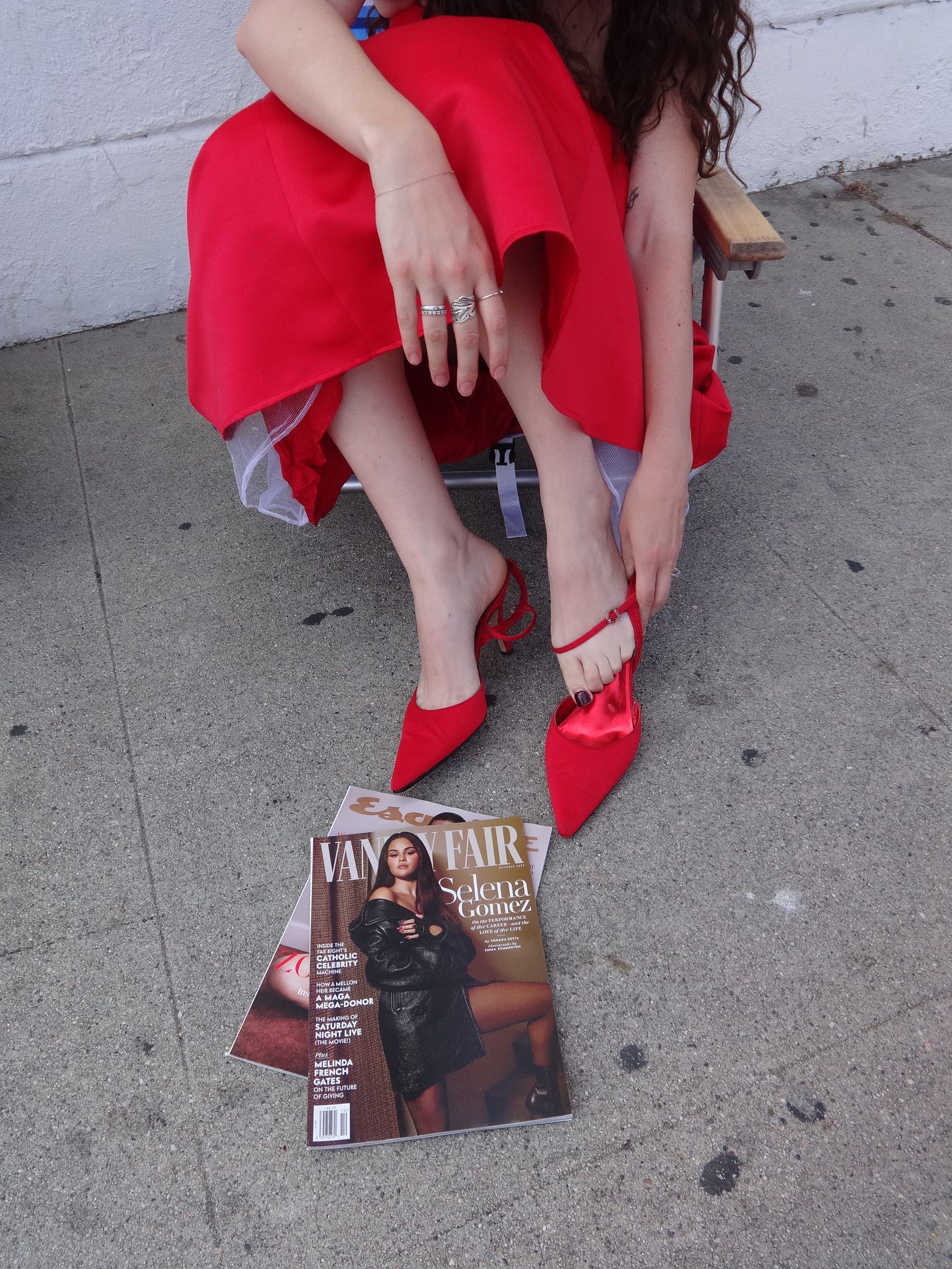
IR: We do extensive research as prep for every episode because our goal is not just to give you a look at the star but all the context that surrounded them at this moment in time. What was happening in the national news? What was going on with the economy? What movies won best picture that year? What scandals or breakups happened? Who was the president? I think it is easy to chalk up any pop culture podcast as frivolous, but when we read between the lines, these profiles become a way to understand a moment in history. We usually come to record with 4-7 pages of notes, relationship timelines, movie log lines, and everything we can think of to try to help our listeners understand the context behind the culture.
Why are magazine covers still crucial even as print is still [questionably] dying out? What do they communicate to the masses?
BH: They tell us about ourselves. The interview process is comparable to therapy, and checking in with our idols allows us to use them as a yardstick for our personal growth as individuals. We need to know where they're at to know where we're at. Also, you can't say pretty pictures aren't inspiring.
IR: When done well, a magazine profile can be a truly moving piece of writing. At its heart, it’s a profile about getting to know one person a bit better, understanding their hopes and their dreams, often catching them in a moment where everything is changing. And while magazine covers are not automatically radical acts of resistance, they do make waves. I think of Beverly Johnson, who was the first Black woman to appear on the cover of American Vogue in August 1974. That was only 50 years ago. Our industry has a long way to go, but I think of all the young girls who are going to CVS and buying magazines with Beyonce and Rihanna on the cover and know that it was so recently not happening.
Do you think print is making a comeback? If so, why?
BH: Yes, but it's in transition. The digital era is fatiguing, and I think the sails are veering toward print magazines as collectibles rather than disposables. We're also vain and pretentious as all hell, and there's nothing like a chic coffee table book magazine to signal our intellectualism. If advertisers can endorse this strategy, there might be life in the old dog yet.
IR: I pray! I still read paper books and buy paper magazines. I think they are irreplaceable, and there is just nothing better than the experience of cracking open a magazine. I feel inspired that NYLON has brought back print, and I see a return to print.
Since you both are journalists, could you give some insight into what goes into producing an entire magazine and new cover?
BH: Oh my god, well, we're writers, not editors, so it would be crazy to say we know the intricacies of magazine production. That said, an EIC and creative director work together closely to generate a concept that feels unexpected and organic. With less time and money now involved, shoots are scheduled and turned around at lightning speed, and everyone gets paid a lot less than you would expect. That's editorial for you.
IR: I observed only from the sidelines during my time at Vogue, literally running final cover photos down to different floors for final approval, and then back up was a part of my job duties. The process is awe-inspiring. Every word is chosen deliberately, every photo has a whole team behind it, and it is just so much work. It is miraculous there is a single magazine on newsstands as far as I am concerned, and even more so now that advertiser funding has been pulled and the Internet has changed the nature of journalism so entirely. So many people are involved in producing a magazine: writers (yes), editors (of course) but also stylists and copy editors and fact-checkers and nail artists and accessories experts and more. It is just a huge undertaking.
Why is there so much power in a magazine cover?
BH: It's just so visible. From newsstands to the social media roll-out, you don't forget a magazine cover quickly. With regards to a story, it's a star as seen through an 'everyman' lens — sometimes that's very flattering, other times, not so much. Either way, quotes live on in print and subconsciously shape who we believe the star to be behind the scenes.
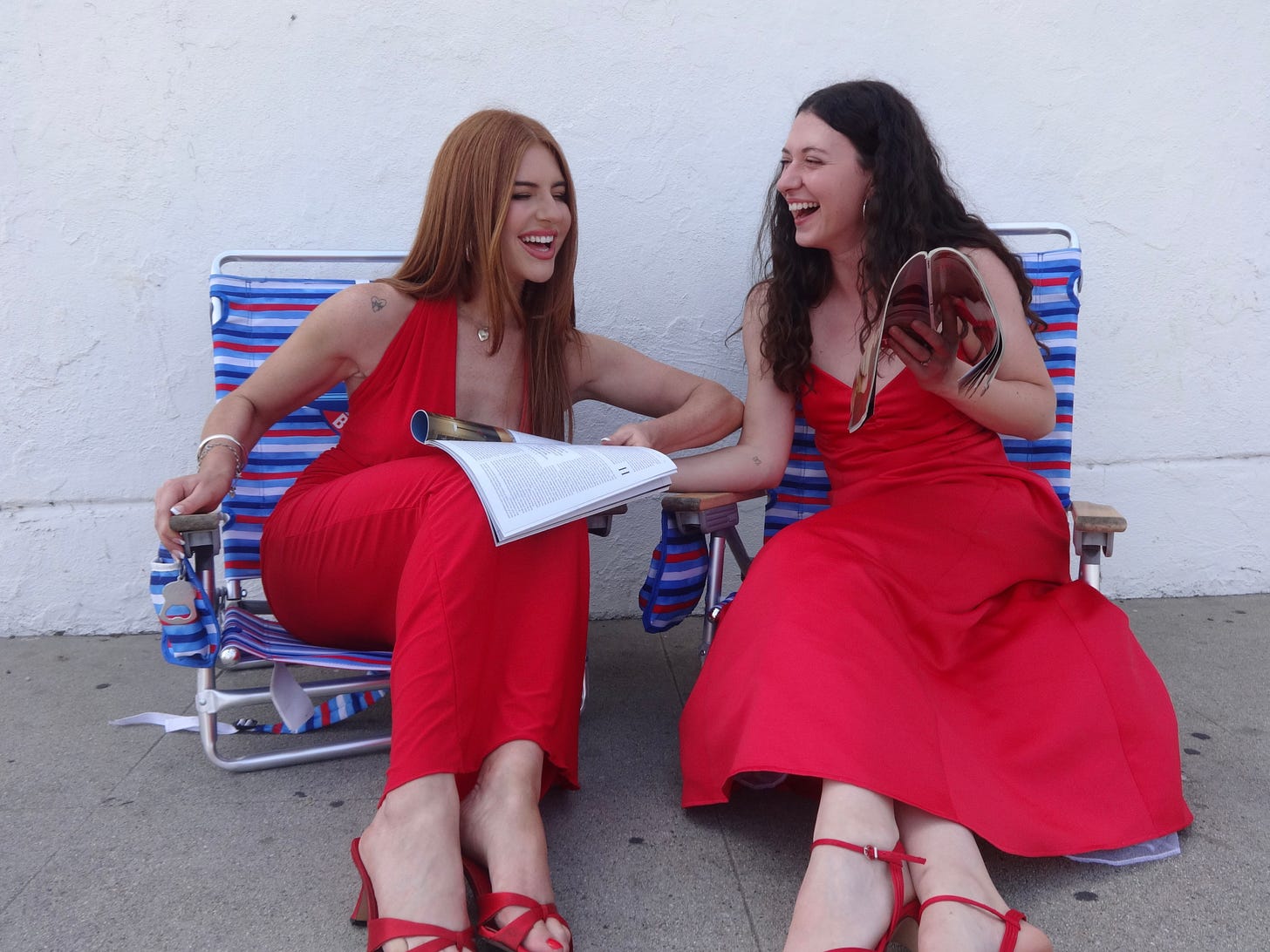
IR: They do not just react to pop culture; they actually create it. That can be said of very few things if we are honest with ourselves! A magazine cover got Courtney Love's baby taken away from her. A magazine cover started a years-long feud between Taylor Swift and Kim Kardashian. They have an impact on our world! They just do!
If you both had a dream cover star, who would it be, for which publication, and what would be the angle for your focus?
BH: It's a joint cover: Justin Bieber and Selena Gomez. Exes and former child stars unraveling the harsh realities of growing up in the industry — nothing off limits. It's gotta be GQ or Rolling Stone (they get the realest these days).
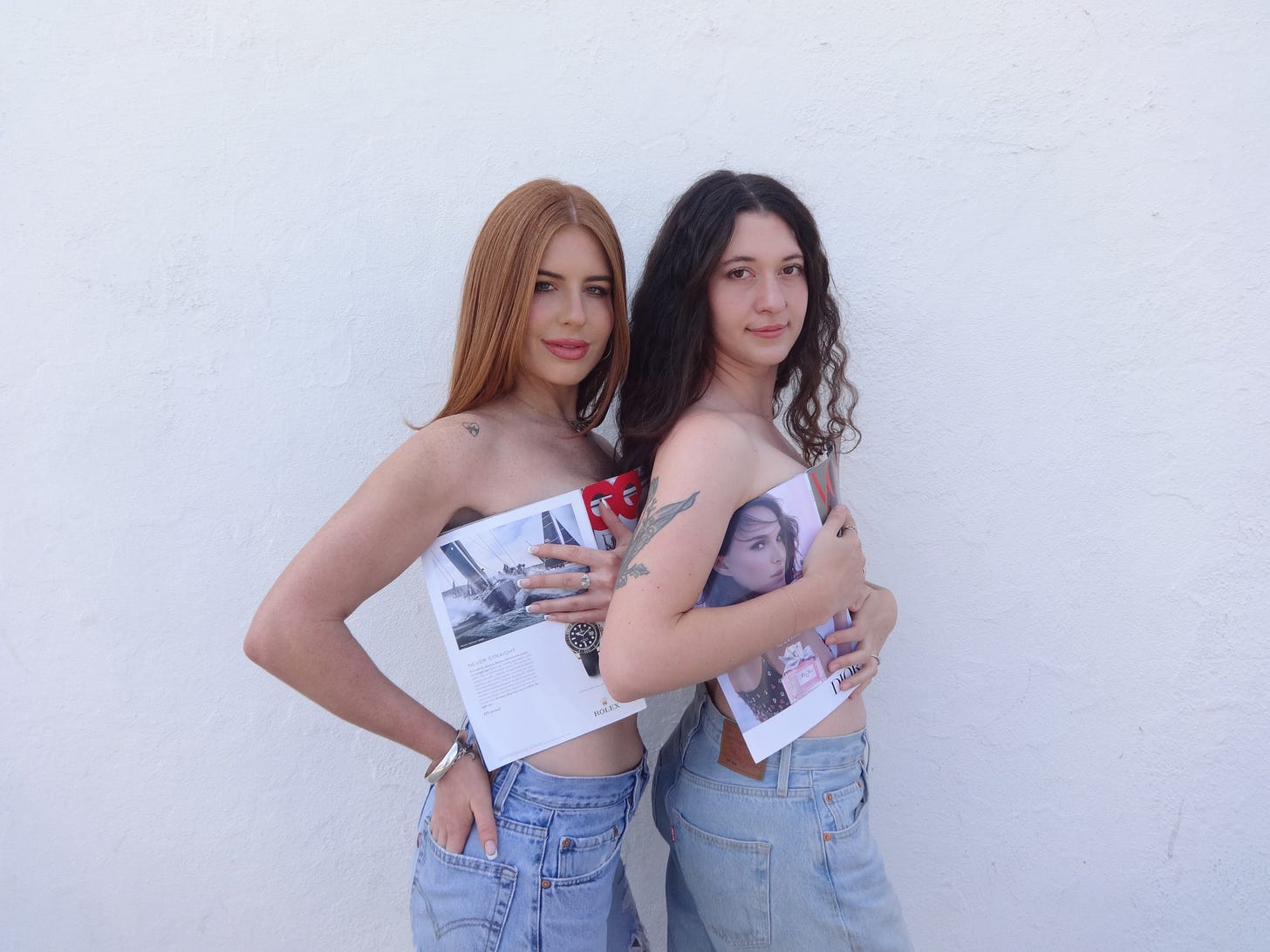
IR: That is such a good one. There is something very "Marina Abramovic and Ulay" about a Selena x Justin reunion on the record. I think my dream is a tell-all with Julia Roberts: I need to know what it was like to be the biggest actress of the '90s, I need to know what she did to her curly hair, I need to know the worst thing she's ever done to someone.

